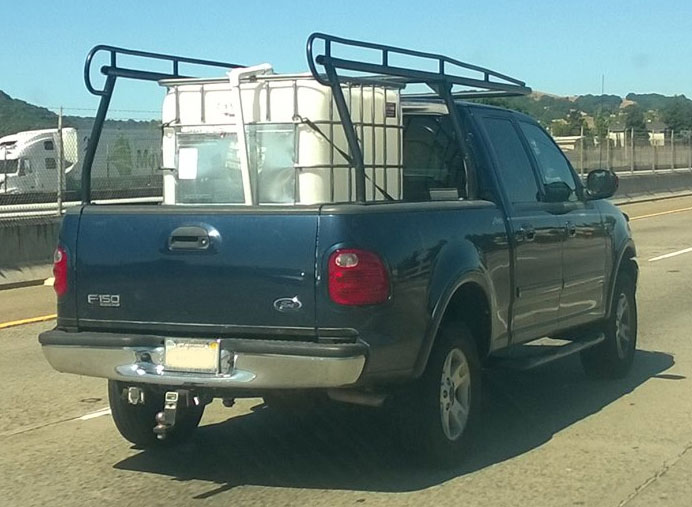
Rain garden in use. Credit: SaveItLancaster.com
It has been a wet winter. Over 40″ of rain has fallen at my home since October 1, 2016. On my quarter acre lot, that accounts for approximately 268,000 gallons of water, or enough to sustain my needs for 3-6 years (daily use averaging between 118 and 213 gallons per day). Note: one inch of water on a square foot of land is 0.623 gallons.
By installing a swale and a rainwater infiltration trench in my front yard, I am planting rain.
In theory, I have provided more than enough water for my drought tolerant landscape to thrive through the summer months. In the backyard, removal of my pool and a large quantity of impervious surface, I have allowed an even greater portion of that water to percolate into the ground and help recharge the aquifer beneath our feet.
There is a wealth of information available at the California Data Exchange Center. By using this data, I was able to figure out how much rain has fallen in my area and calculate about how much rain fell on my property.
You may be wondering how I came up with these ideas to “Plant the rain”? I owe it to the teachings from Brad Lancaster, author of the rainwater harvesting “bible” Rainwater Harvesting for Drylands and Beyond.
Brad recently spoke at a TEDxTucson about the concept of “Planting the Rain to Grow Abundance“. In his talk, he shares that the 11 inches a year of rain that falls in Tucson is more than enough water to support the entire cities’ water needs. Except there is a catch, due to paving with impervious surfaces, rainwater quickly flows out of town instead of into the ground.
Brad presented tools for all of us to use in our communities and neighborhoods such curb cuts, stormwater basins and rain gardens. He was able to work with the city of Tucson to enact programs which helps put more water into the ground. Municipalities around the country are actively implementing programs of their own.
For instance, look at the City of Lancaster in Pennsylvania which created the “Save It Lancaster” program to help city residents transform their yards into rain gardens full of native plants which utilizes rain water run off from sidewalks and roofs to help grow pollinating plants that wildlife depends on to survive.
They feature numerous projects on their page showcasing the property before, during and after construction. In a video posted to YouTube, you can see many of these projects in action with interviews from their owners.
Whether you’re interested in saving rainwater for a dry day or would rather use free water from the sky to irrigate your landscape, using the tools presented here can help you achieve your goals.



Leave a Reply